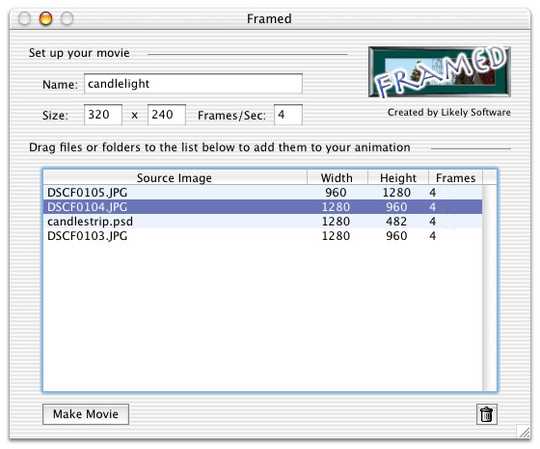20
9
I'd like to convert a folder of PNGs into a quicktime .mov with PNG compression (it's a folder of fractals in an animation; PNG compression works great here and the losslessness is important). What programs will do this with minimal fuss? (I don't have or want to pay for a full license of QuickTime Pro.)
UPDATE:
Let me make this more clear: minimal fuss means: I download some EncoderMagic.app (for example), I double click it to launch it. I select the folder with my numbered images, and out pops my movie. No mess. No resizing. ... Perhaps this doesn't exist (or is called QuickTime Pro?)

Possibly of no interest or help to you, but I understand that 'QuickTime Pro' as we currently know and love it is going to become just 'QuickTime', fully-featured and bundled as part of Snow Leopard - in others words, included with the OS. – robsoft – 2009-08-08T15:43:01.867
I thought I'd heard that. It will make this problem go away, hopefully... I'll keep a heads up for it in the next few months. Thanks. – Jared Updike – 2009-08-09T00:35:14.243
I used VirtualDub in Windows and accomplished my task but I'd still like to do this on my Mac if possible in the future (you know, since Macs have this reputation for being good at video and making movies). I guess I can wait for Snow Leopard? – Jared Updike – 2009-08-10T20:42:26.953